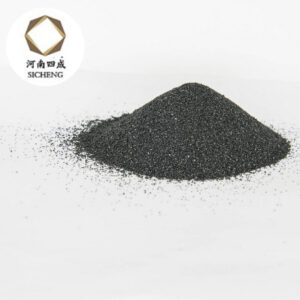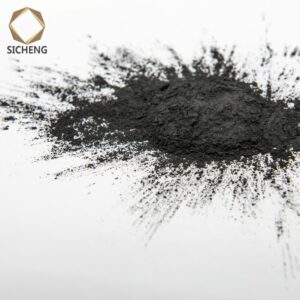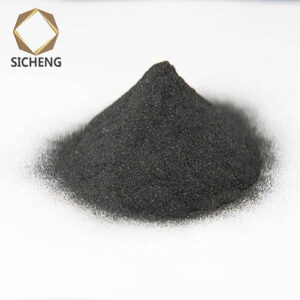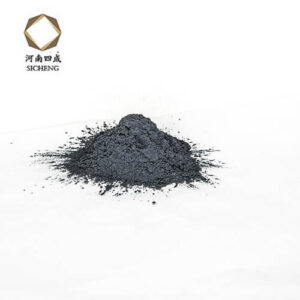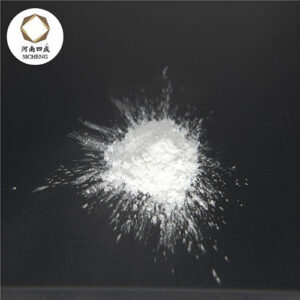Why do rubber products use white corundum powder and fused alumina powder ?
The rubber industry uses a large number of fillers as compounding agents, and its consumption is second only to that of rubber. Reinforcing fillers are used in rubber, which can not only improve the strength of rubber products, but also improve the processing performance of rubber materials, and endow products with good wear resistance, tear resistance, heat resistance, cold resistance, oil resistance and other properties, which can prolong The useful life of the product. Non-reinforcing fillers are used in rubber, mainly for filling and compatibilization, and some varieties also have the functions of isolation, mold release or coloring.
1. General requirements for fillers in rubber products
(1) The surface of the reinforcing filler particles must have strong chemical activity, which can produce a good combination with the rubber, and can improve the mechanical properties, aging resistance and adhesive properties of the vulcanized rubber. The surface of non-reinforcing filler particles is chemically inert, does not produce chemical combination with rubber, and does not affect the mechanical properties, weather resistance, acid and alkali resistance and water resistance of vulcanized rubber.
(2) It has high chemical purity, uniform fineness, and good wettability and dispersibility to rubber.
(3) It is not volatile, odorless, tasteless, non-toxic, and has good storage stability.
(4) Fillers used for white, light-colored and colored rubber products are also required to be non-polluting and non-discoloring.
(5) Cheap and easy to get.
2. Performance requirements for fillers
(1) Fineness: Generally speaking, the finer the reinforcing filler particles, the larger the specific surface area, the larger the contact area with rubber, and the better the reinforcing effect. The finer the non-reinforcing filler particles, the better the mixing effect after adding rubber. However, it must be uniformly dispersed. If the dispersion is not uniform, even if the particles are very fine, the mixing effect will not be good.
(2) Particle shape and crystal form: The shape of filler particles is preferably spherical, and sheet-shaped or needle-shaped fillers are prone to directional alignment when the vulcanized rubber is stretched, resulting in increased permanent deformation and reduced tear resistance. Carbon black and white carbon black in the reinforcing filler are amorphous, and other fillers are also crystalline. For example, although the chemical composition of silicon micropowder and white carbon black is silicon dioxide, the former is crystalline and the latter is amorphous. Crystalline fillers are divided into two types: heteroaxial crystal and equiaxed crystal. The equiaxed crystal has similar x, y, and z axes and is isotropic. The heteroaxial crystal has significant differences in the x, y, and z axes and is anisotropic. Among the commonly used non-metallic mineral fillers, clay, graphite, and diatomaceous earth belong to the heteroaxial crystal system, and calcium carbonate belongs to the equiaxed crystal system. For rubber products that require good wear resistance and tear resistance, it is not suitable to use heteroaxial crystal system materials as reinforcing fillers.
(3) Surface properties: The powder filler is mixed with rubber, and its particles are surrounded by rubber molecules. The degree of wetness of the particle surface by rubber has a great influence on the reinforcing performance. Particles that are not easy to wet are not easy to disperse in rubber, and are easy to agglomerate, reducing its reinforcing effect. This situation can be improved by adding certain substances that help to increase moisture. For example, calcium carbonate with little reinforcing effect, after adding fatty acid, reduces the surface tension, increases the degree of wetness, and improves the reinforcing effect.
It can be seen from the above examples that a large number of reinforcing fillers and non-reinforcing fillers are used in various rubber products. Different products use different types and varieties of fillers, and the amount of fillers varies greatly. In actual use, formula design should be carried out according to the performance requirements of rubber products, rubber types should be selected, reinforcing fillers should be added to improve mechanical properties, and non-reinforcing fillers should be added to improve processing performance and reduce production costs. The formula is optimized by adjusting the vulcanization system and protection system, which is the basis for producing high-quality rubber products.
In addition to the calcium carbonate, clay, barium sulfate and talc listed above, there are many natural inorganic mineral powder materials that can also be used as rubber fillers, such as dolomite containing magnesium carbonate, wollastonite containing calcium silicate, and Sulfate barite, gypsum, graphite containing amorphous carbon, coal powder and other silicon-containing powder quartz (diatomaceous earth), asbestos, pyrophyllite, coal gangue, oil shale, fly ash, attapulgite , red mud, etc.
Manufacturers of rubber products can choose different fillers according to product performance requirements and prices, and determine their optimal dosage through formula tests.

